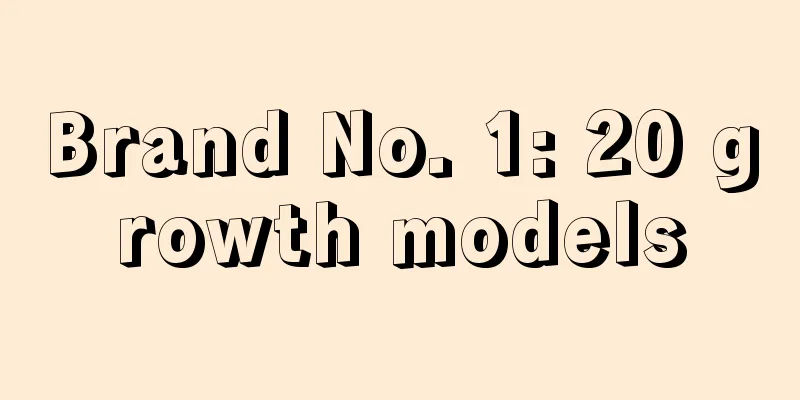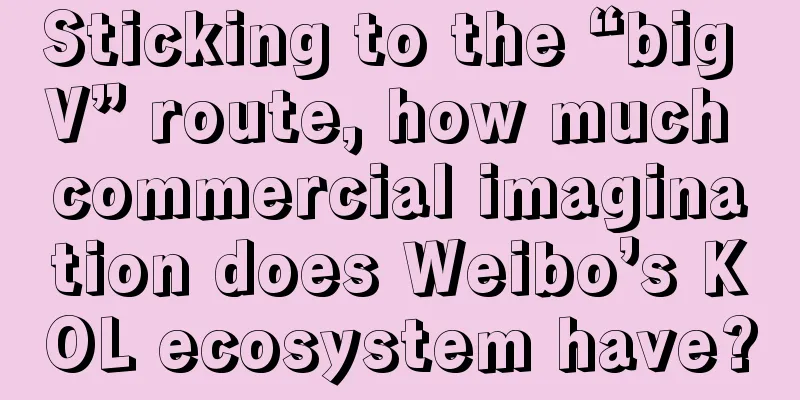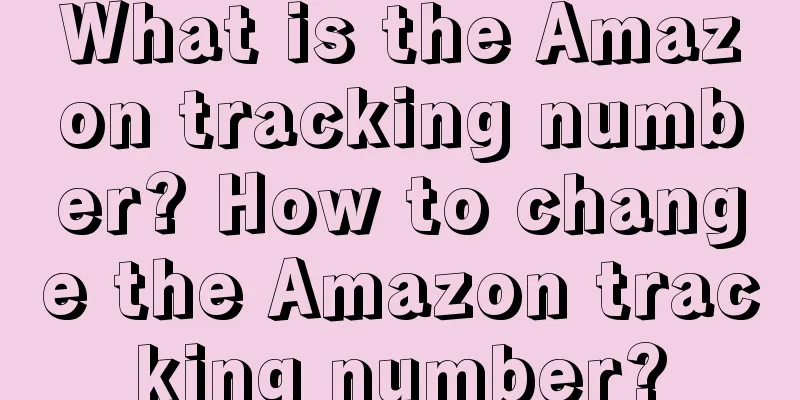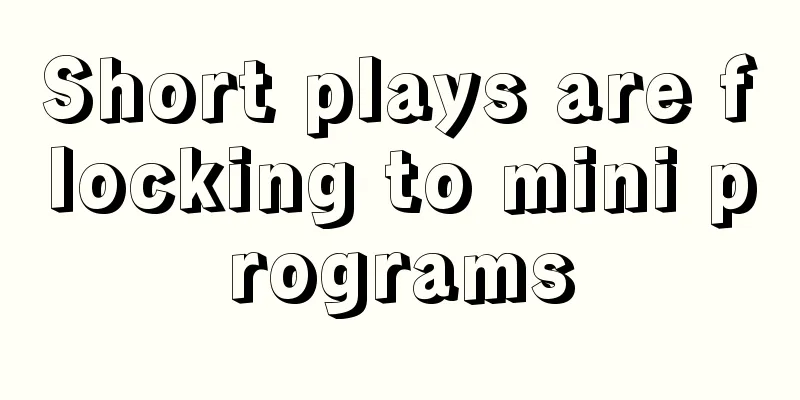Brand No. 1: 20 growth models

1. 5A User Behavior ModelThe concept of the whole domain is essentially to deal with the fragmentation of consumer touchpoints caused by the differentiation of media. The common domain is the traffic conversion efficiency of content and KOLs, and the private domain is the user stratification operation, which is a problem of consumer life and behavior cycle management. Public domain + private domain = whole domain 5A: Describe the strength of the behavioral relationship between consumers and brands from the perspective of consumer behavior.
In the past, promotion was centralized, but now it is decentralized. Is it harder or easier? In essence, it has become easier, and even consumer reach has become more efficient. The premise is that you can skillfully plant grass and penetrate in stages.
2. Brands Cross the ChasmCreating hot products is to ignite the circle of core users, celebrity endorsements, and cross-border collaborations are brand actions to break through the circle. The transition of consumers from the early majority to the late majority is the result of the global growth architecture.
3. GMV = People who have heard of X, are willing to buy X, buy to X, repurchase X, and have capacity in the product categoryGMV is determined by these five elements, which correspond to brand actions: product, positioning, promotion, channel, and operation. As for which one is important and which one is not, none of them can be missing. Products are important in the product battlefield stage, channels are important in the terminal decisive battle, promotion is important in the media communication stage, and mental brands are important in the final battle of competition. Different stages have different contradictions, and different contradictions lead to different problems.
4. Basic Probability ModelThe probability of an event happening is equal to = basic probability * the probability of the event itself. Category is the foundation and ceiling of the business. In a declining industry, you cannot escape from it. The basic plate of the category determines the probability of success or failure to a large extent. Think of business as a semantic tree. Before delving into details or branches and leaves, you must understand the basic principles. Small opportunities in the big track are based on the understanding of the basic principles of categories and differentiation. Otherwise, the details and leaves will have nothing to attach to. The underlying logic of unchanged categories is that the value of connecting to customer needs remains unchanged - categories connect to needs, consumers think in terms of categories and express themselves with brands - have a bottle of Coke, drink some Starbucks, take a Didi. Coke = Coca-Cola, Starbucks = coffee, Didi = taxi, and brands occupy (represent) categories, which is the shortest path to grasp the underlying needs of consumers. Brands are the tip of the iceberg, while categories are the entire iceberg - only by understanding categories can we better understand business. The power of "differentiation" makes the world rich and colorful. Everything in the world originates from "differentiation", and "differentiation" is the inevitable trend of species development ("The Origin of Species"). Three logics:
5. Brand Moat ModelTraffic occupies the channel, and brands occupy people's hearts. The essence of traffic is buying and selling (buying traffic and selling goods). Only when consumers are willing to pay a premium for the brand and pay for the brand, the company has a real moat, which is also the value of building a moat. In terms of the product dimension, for the same function and category, once the consumer's mind is saturated, it will be difficult for you to break into it again. In the field of marketing psychology, there is a concept that users can only remember seven brands in a category. In the current era of media information explosion, products are not competing products, but the competition for attention itself is. Attention first comes from the demand for the category, followed by the presentation of media + traffic + content, and then the choice of brand. That is, demand-search-interest-comparison-selection-purchase-evaluation-sharing-repurchase. 6. Business War 4 ModelThe vast majority of strong brands are created in the early stages of a category’s rise. The advantage of a category’s own halo and becoming number one comes first from the advantage of cognition. The opportunity for the second and third place is to discover, create, and combine cognitive advantages and corporate strength to make objective choices (offensive warfare, defensive warfare, flanking warfare, guerrilla warfare). Battlefield (creating cognitive advantages), battle zone (focusing on advantageous resources), battle situation (brand differentiation strategy), battle situation (grasping the trend of category differentiation). Based on the conditions of superior cognition and the basis of corporate strength, the battle zone is selected and the battle is decided. As the saying goes: Knowing the place of battle and the day of battle, you can fight thousands of miles away - Sun Tzu's Art of War.
7. Scale Barrier ModelSilicon Valley godfather Jeffrey Moore once made an interesting statement about the final market structure of emerging industries: Imagine there are three animals in the forest: gorillas, baboons, and monkeys. The 800-pound gorilla is the undisputed overlord, and all the bananas in the forest belong to it; the baboons do not compete with the gorillas for the market, but focus on their own market; the monkeys often travel in groups, but they can only survive by picking up small and rotten bananas that the gorillas and baboons do not eat. The boss's problem is how to achieve scale advantage, and then have the cost advantage of the entire product line. Michael Porter, total cost leadership emphasizes: when other companies have lost profits in the competition, this company can still make profits. Without scale, there is no basis for quantity. 8. Business = Position x Rhythm x Strength x StrategyFrom the perspective of industry, there are industry market price segments; from the perspective of categories, there are category differentiation and category characteristics; from the perspective of competition, there are previous waves and there will be more waves to come. Sun Tzu's Art of War says: If you know the place of battle, you can fight a thousand miles away on the day of battle. Knowing where to start a battle and choosing where to start a battle are more important than the action of starting a battle. In the battle for Shu-Han, Liu Bang occupied Hanzhong (occupied an advantageous position). Xiang Yu wanted to attack but could not break in, but Liu Bang could attack at any time, achieving the strategic effect of being able to conquer the world directly if he advanced or to stay in a corner if he retreated (occupied an advantageous position). Liu Bang could fail many times in specific battles because Hanzhong, as an advantageous position, could preserve his strength. Xiang Yu would have suffered a strategic failure if he had failed once. In the words of Chairman Mao: We, the commanders and fighters, should pay attention to those who have won a war and have everything saved, and at the same time, we should pay attention to those who have lost a war and have everything lost.
9. Signal Coverage ModelIn "The Three-Body Problem", Ye Wenjie sent a signal to the sun, which was strengthened by the sun and then sent out into the universe. The signal was so strong that the Three-Body Galaxy in Centaurus could receive it. Building a brand is also about sending signals. It must be strong, large, wide and long.
Coverage is a process of widespread publicity, and penetration is a concept of circles. In a decentralized media environment, people are connected by different KOLs, which is what Kevin Kelly said: the concept of media is people. Penetration can be either penetration within the same group of people or penetration across groups of people. Only new media can generate new cognition. Obviously, the position of new consumer brands should be new media and new traffic, because there are new people behind them. The essence of new people is the existence of this cognitive window (vacancy), and only when there is a cognitive window can there be a chance to establish mental opportunities - this is also a question of choosing the soil for planting grass. 10. Zoom in, zoom outAny product must have only one core function, not a variety of optional functions. The more you talk about functions that are neither good nor bad, the more mediocre the product becomes. Mediocrity actually means that you haven't found the real point. If you can't find that point, you can't break the situation and open up the situation. Breaking through the situation must be coordinated with the general direction, points, lines, surfaces and bodies, and establish a big picture of the single product leading system. Former Apple CEO Sculley proposed a term called (zoom in) abstraction and (zoom out) focus, looking at the direction and trend of the entire industry from a high level, which is the direction of the battle, and the latter is to focus on a single point to break the battle situation. He can see the battle situation and sink into the game, start the game, and break the game. There are few people in the world who can perfectly combine these two. Fortunately, we are an organization, and the chairman's talent and the general manager's strategy can complement each other. 11. Repeat to build cognitionKahneman pointed out in his book Thinking Fast and Slow that humans are creatures who need to stay alert in their living environment. Repetition can induce a sense of comfort and familiarity in cognitive relaxation. If a piece of information appears repeatedly without causing any bad consequences, it will become a safe signal. Over time, safe is good, and familiarity makes people like it easily - this is the concentrated exposure effect and repetition effect in psychology.
In fact, those successful brands, whether in traditional media or new media, whether in pictures and texts or short videos, have a deep and simple understanding of the importance of repetition, from not accepting gifts this year, to drinking Wong Lo Kat for fear of getting angry; from anti-dandruff, Head & Shoulders, to Heng Yuan Xiang, Yang Yang Yang, they never get tired of repeating it over and over again, even to the point of being vulgar - even if it is vulgar, it is really effective. 12. Consumer RoleThe essence of traffic is attention, and the essence of traffic business is the sale of attention. The stronger the stimulus signal, the greater the attention; the longer the stimulus signal, the weaker the attention; the more accurate the traffic, the higher the conversion efficiency. In 2019, Adidas' global media director said something meaningful: In the past year, we have spent a lot of money on investing in traffic effect advertising, accounting for as much as 77%, which is the main reason for Adidas's performance damage. In fact, consumers’ market roles can be divided into six types: information collectors, decision makers, buyers, experiencers, communicators, and disposers. A brand can go viral because it covers all target consumer roles in the market, rather than just targeting decision makers and buyers. One-dimensional information flow is the worst form of sales, live streaming is the second worst, and between the two evils, seeding products at least targets product experiencers and product disseminators. To make traffic accurate, you must target a single consumer role. The more accurate the traffic, the more effective it is. The more effective it is, the more it focuses on a single role (buyer). While improving efficiency, it also loses five-sixths of the brand's effectiveness. Therefore, a brand that simply delivers information flow and looks at the conversion rate will end up with no traffic to invest, no volume to convert, and no way to go. 13. Origin market = Origin crowd + Origin channelThe origin market, the origin crowd, and the origin channel are a process of mutual emergence. Through the origin crowd, the origin channel can be clearly identified, and then the origin market can be found in the process of continuous superposition of the origin crowd and the origin channel. Market is a general concept, market = channel + crowd. In the process of 0 to 1, the first thing to understand about the market is the origin crowd. That is: a clear portrait of the origin crowd. The so-called origin crowd portrait is not just about age, gender, income, and education, but more about the behavior, preferences, and catalyst habits of the origin crowd. For example: the preferences of the origin group for media and content, whether it is Xiaohongshu, Douyin, pictures and texts, or short videos; in addition, attention should be paid to the "portraits" with opinion leader characteristics among the origin group, who usually become super users, which requires "tracking" of the data and behavior of the origin group. For example, you can focus on following up on 10 original customers, their Weibo, Douyin, and Xiaohongshu historical pictures and texts. You can do this by creating a group and regularly sending out small benefits and surprises. Then, you can gradually clarify the original customers' understanding of the product's functions and benefits. In other words:
By understanding the real consumers, we can gradually understand how consumers buy, why they buy, where they buy, and how they use them, and then gradually improve and establish a clear initial market cognition. Once this initial cognition is established, the subsequent source channels will gradually become clear. Even vice versa, the product publicity, media, promotion, pictures and texts, and KOL placement will also be targeted.
After the origin crowd, there are the origin channels. The origin channels are those channels that can really move and sell goods. Different consumers have different catalyst habits, and the efficiency of the same product on JD.com, Tmall, Taobao, Pinduoduo, Douyin, and Kuaishou is also different. The logic of people, goods, and places is to go from the origin crowd (people) to the origin channel (place), and then achieve the matching of people, goods, and places, and find the origin market. Then establish and build a model market, and gradually establish a base. From 4P to three origins, then to model market, and then to base construction. This matching process is the initial cognitive challenge that new consumer brands must go through from 0 to 1, namely: 4P, three origin challenges. 14. Growth ModelTop-level design: Top-level design is not about designing the top level, but about forming top to bottom: going all the way to the bottom, going all the way to the bottom, and going all the way to the bottom. That is: corporate strategy - market strategy - brand strategy. Corporate strategy determines market strategy, and market strategy determines brand strategy. Corporate strategy determines what to do and what not to do. Corporate resources are limited, and the strategy at the corporate (organization) level first determines what not to do and what to do. Choose what industry (track), what market opportunities to target, what business segments to do, and what product line planning to pull out. That is: industry-market-business-product line Market strategy: You can think of market strategy as drawing a "battle map". The enterprise strategy has already planned the industry, market, business, and product line, just like the food and soldiers are ready. How to fight this battle, which soldiers (products) to send out first, which hilltop (origin market) to occupy first, which soldiers to send out later, how to go from a point to a line, and then to a surface, and what kind of situation to form. Brand strategy: Products occupy shelves, while brands occupy minds. The best strategy is to attack the enemy's strategy. It means what kind of flag you should raise to command the world and conquer the world. How important is this flag? It is related to investment and can determine life and death. It comes down to: brand naming, product serial packaging, and differentiated reasons for purchase.
15. Five-paragraph theory of competitive value
The five levels represent the evolution of competition in a category market. The higher the progress of levels 1-5, the stronger the competitive moat for profit will be, and the more powerful the brand will be in pricing. Similarly, in a category market that uses brand as a competitive tool, it will eventually move from level 1 to level 5. In the product stage, having a product is better than having no product, a good product is better than a bad product, and having technology is better than having no technology; in the channel stage, the quantity of offline and online companies will eventually be consistent; brand awareness is nothing more than celebrities + advertising, pictures and texts + short videos, traffic + content. Competition on the product side, channel side, and brand awareness side has gradually escalated to competition on brand recognition. Equipment can immediately catch up, and production capacity can be enlarged. In the long run, offline channel distribution will eventually become a zero-sum game. Online, you can promote products on Taobao, JD.com, and Tmall, and I can do the same. These are not the most important. What really matters is who is the first to penetrate the mind and inject the brand into the mind. In the current melee stage, all brands have opportunities. 16. Category differentiationIn the process of differentiation, there will be a fuzzy stage - the critical state of differentiation. For example, imported beer may have formed a new category in the cognition of heavy consumers - drink some imported beer. Even this kind of heavy consumer group supports the emergence of segmentation in cognition. However, among the broad spectrum of people, it may not have the cognitive basis for this segmentation, and they may think that both belong to the beer category. Judgment basis: consumption trends, perception, and opponent's defense. Consumption trend: Are more and more people buying this product, especially those in your parent category, leaning towards you? For example, among people who drink beer (parent category), are more people shifting to the trend you think? Perceptibility: Does the new category have a clear and effective benefit point compared to the original category? Is the differentiated value point obvious enough for customers to perceive? For example, is there a clear perceptible difference between the taste of imported beer and domestic beer, especially for non-heavy consumers? If so, the brand that promotes the category should enter the mind as soon as possible before the cognitive window. Defense of the opponent: The opponent of the original category: This type of competitor is the biggest threat to us. They are very familiar with the industry and may even be stronger than you. The new category you differentiate will usually cause damage to their interests, and they will definitely find ways to block you. This requires finding the opponent's structural disadvantages. 17. Extremely absurdCreating a bigger, more complete, and better company to surpass competitors is like throwing an egg against a rock for a startup. Startups should maximize a single factor, focus on the most critical single factor, and concentrate their superior strengths to make a breakthrough. Munger said: Once a company achieves something almost absurd in an important link, it has a winning system. In fact, good businesses can live in people's hearts, but it is not easy to live in people's hearts. Users will hardly remember ordinary or mediocre products and services. What can make users remember and be moved are those almost absurd qualities or services. Focusing resources on a single point and a single element will bring about the peak experience of word of mouth. Because the extreme absurdity produced by a single factor is the easiest to trigger strong memories and goodwill among users, and it is also the easiest to establish popularity and open up relevant mental connections among users. Once this kind of traffic returns, its brand will inevitably benefit. The key to a company's success lies in "maximizing a single factor", that is, the company should focus on a core element of the first curve, invest heavily in resources, identify the breakthrough point through the 10-fold change of a single factor, and then invest all resources to maximize the single factor and break through the threshold. What is needed is the judgment and execution of the founder.
18. The Law of Imitation
French sociologist Tarde proposed the "grass-planting psychology" in his book "The Law of Imitation". He believed that "everyone has the habit of imitating others, and this imitation is the most basic social relationship". Tarde also proposed three laws of imitation: First, people in the lower classes of society tend to imitate those in the upper classes. Second, once imitation occurs, it grows exponentially and spreads rapidly. Third, humans’ imitation of native culture is always better than that of external culture. Imitation is the most basic social relationship and the ultimate element of social behavior. Society is a group of individuals who imitate each other. Social relations are basically imitation relations. Combined with the innovation diffusion curve, how does a new product or brand become popular? In the end, it is just a small group of people who try the product first, and then it causes the masses to imitate. The same is true for real consumption: According to a survey by Clour, 67.8% of users believe that seeding content has a great influence on product selection and final purchase behavior, 74% of users have purchased seeded products, and 80.7% of users will complete the purchase within a week after being seeded. KOC/L marketing is essentially a kind of consumer imitation. Digging deeper, the root of imitation lies in identification. This includes: identification of identity, emotions, attitudes, and values.
19. Selling point formula: selected, possessed, satisfiedRed Bull: It uses ingredients such as (taurine, caffeine, vitamin B12, etc.) and has the function of (refreshing and anti-fatigue), satisfying the interests of users (the need to boost spirits when tired or sleepy). So, when you feel sleepy or tired, drink Red Bull. Yuanqi Forest: It uses ingredients (water, erythritol, carbon dioxide, etc.), and has the functions of (low sugar, 0 fat, 0 calories), which satisfies the interests of users (who want to drink beverages but are afraid of getting fat), so it tastes good and does not worry about getting fat. Xiaoxiandun: It uses (95℃ constant temperature stewing) technology, and has the function of (maximizing nutrient retention), satisfying the interests of users (who want to eat bird's nest but are not convenient to process it). Therefore, if you want fresh stewed bird's nest, look for Xiaoxiandun. San Dun Ban: It has chosen to (self-build the entire chain from "roasting-extraction-freeze drying"), has the function of (dissolving in any liquid at any temperature), and meets the users' interests of (quality + convenience). Therefore, if you want premium instant coffee, choose San Dun Ban. Jane Eyre: Only (raw milk, sugar, lactic acid bacteria) are used as ingredients. It has the function of (healthy, no additives) and meets the (health, safety) interests of users. Therefore, this is Jane Eyre, raw milk, sugar, lactic acid bacteria, nothing else. Ramen says: We use (semi-fresh noodles, customized seasoning packages) as ingredients, which have the functions of (healthy, convenient, and delicious), and meet the interests of users (both healthy and convenient), so Ramen says, it is a ramen restaurant at home. 20. 5A StrategyFrom brand users, to competitor users, to category users, to cross-category users, and finally to scenario users. Only by constantly breaking through the circle can we maintain growth, especially in the stage of crossing the chasm; this is even more true for achieving exponential growth - traffic, breaking the circle, conversion, operation, and sedimentation of mind. Based on consumer portrait labels and sales base data: define the brand's core portrait labels and lock in the A4-A5 core strategic groups: emerging white-collar workers, senior middle-class, sophisticated mothers, small town youth, Gen Z (Generation Z), urban silver-haired people, small town middle-aged and elderly people, and urban blue-collar workers. Based on the A4-A5 portraits, attract new user circles to increase traffic. That is: the right people (user portraits), multiple levels (5A stratification), multi-dimensional reach (off-site, on-site) 1) Based on the insights of brand 5A people, clear user portraits 2) Produce insight-based crowds and break-circle strategies 3) Implement closed loop through operation Through the analysis of the 5A of the population and brand users, we can clearly correspond the strategies to the different circles of people. The core of breaking the circle is to attract users other than A4-A5 types, and guide users to gradually settle into A2-A3 users through content, so as to prepare for traffic accumulation for sales conversion. According to the 5A population level, a reach combination of "brand advertising + content seeding + paid traffic" is formulated to achieve content reach across touchpoints/frequencies. Off-site: Based on data portraits, select brand advertising to reach the O-A1 population, stimulate conversion of the A1-3 population through short video influencers, and then cooperate with bidding advertising to convert them into the A4 population. On the site: Super Interactive City and Brand Special Show expose the "O-A1 group" (targeting the opportunity group) and reach new users. Use the through train to reach the "A2-3 group" with shopping intentions, stimulate users and deepen their behavior, use Diamond Exhibition to reach the "A3-A4 group" (interest group, purchase group), and use Product Sales to reach the "A4-A5 group" (purchase group, loyal group). Position, rhythm, troops, strategy, and finally complete the product structure based on the 5A population: Author: Houshan Keju, Source: WeChat public account "Lao Gao Business and Brand" |
<<: Subverting the traditional growth model: What did Duolingo do right as its DAU soared?
>>: 108 Marketing Models That Strategists Must Know in 2023 (Version 11.0)
Recommend
Nine thoughts: How should companies change in 2023?
The economic winter has not ended, the collapse of...
Data-driven business: Are you the driver or the donkey pulling the cart?
Driving force is a business concept that our marke...
Three major players and many competitors are surrounding each other, and the "chaos gate" of local life has begun
Introduction: With the development of major conten...
The final payment people are back: the black and white of the Double 11 pre-sale
As the Double 11 Shopping Festival kicks off, the ...
How much does it cost to open a cross-border e-commerce store? What are the cost structures?
Opening a cross-border e-commerce store is not som...
How to hire people for cross-border e-commerce? What are the skills?
On the cross-border e-commerce platform, it is dif...
How to write an Amazon Spring Festival holiday notice? What templates are there?
Before the Spring Festival holiday, Amazon merchan...
How does Lazada do self-delivery? Introduction to the delivery process
Lazada is the leading e-commerce platform in South...
How to get the Amazon Gold Shopping Cart? What should I pay attention to?
Amazon is a cross-border e-commerce platform. In r...
Shopee Official Wallet January Advertising Gold Activity Description
Shopee Official Wallet Advertising Bonus Incentive...
What does Amazon infringement mean? What should I do?
Some Amazon sellers have been operating their own ...
Is it easy to do business on Amazon Japan? What changes have taken place?
If you want to open a store on Amazon's cross-...
Three questions for brand marketing planners
This article begins with a question: others have a...
How to do wish drop shipping? What are the advantages?
Nowadays, most people want to do drop shipping. If...
I sell farm tools on Douyin, and the sales are over 100,000
Most people can’t imagine that online e-commerce c...









